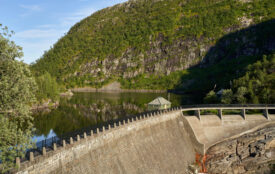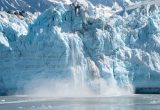climate change drives rainfall extremes
Record-wet and record-dry months increased in regions worldwide.
More and more rainfall extremes are observed in regions around the globe – triggering both wet and dry records, a new study shows. Yet there are big differences between regions: The central and Eastern US, northern Europe and northern Asia have experienced heavy rainfall events that have led to severe floods in recent past. In contrast, most African regions have seen an increased frequency of months with a lack of rain. The study is the first to systematically analyze and quantify changes in record-breaking monthly rainfall events from all over the globe, based on data from roughly 50,000 weather stations worldwide. Climate change from fossil fuel greenhouse gases has long been expected to disturb rainfall patterns.
„We took a close look at observed monthly rainfall data – if it’s not just a few days but several weeks that are record wet, this can accumulate over time and lead to large river floods, or to droughts if it is record dry,“ says lead author Jascha Lehman from the Potsdam Institute for Climate Impact Research (PIK). The impacts on people’s livelihoods in the affected regions can be huge, ranging from flooded houses to endangered food security due to large-scale agricultural losses.
Downpour in parts of US, Europe, Russia – drought in parts of Africa
The US has so far seen an increase of record wet months by more than 25 percent in the Eastern and central parts over the period 1980-2013. Argentina and bordering countries have experienced an increase of 32 percent. In central and northern Europe the increase is between 19 and 37 percent. In the Asian part of Russia the increase is around 20 percent, while South East Asia shows an increase of about 10 percent.
The scientists ran strict tests for the statistical significance of observed changes. Therefore, they so far see significant changes in dry extremes just in Africa south of the Sahara and in the Sahel zone where dry records have increased by up to 50 percent. „This implies that approximately one out of three record-dry months in this regions would not have occurred without long-term climate change,“ says co-author Dim Coumou from the Institute for Environmental Studies (IVM) at Vrije Universiteit Amsterdam. „A central conclusion from our study is that, generally, land regions in the tropics and sub-tropics have seen more dry records, and the northern mid- to high-latitudes more wet records – this largely fits the patterns that scientists expect from human-caused climate change.”
UN climate summit decides about future rainfall extremes
The scientists compared observed wet and dry rainfall extremes to the number of extremes that would be expected in a climate without long-term changes. „We checked for new records – monthly rainfall values that have never been observed before in a given region since the beginning of systematic measurements more than a hundred years ago.“ Of course one expects to see some rainfall records simply due to natural variability. „Normally, record weather events occur by chance and we know how many would happen in a climate without warming,“ explains Jascha Lehmann. „It’s like throwing a dice: on average, one out of six times you get a six. But by injecting huge amounts of greenhouse gases into the atmosphere, humankind has loaded the dice. In many regions, we throw sixes much more often with severe impacts for society and the environment.“
„It is worrying that we see significant increases of such extremes already at just one degree global warming,“ adds Lehmann. „Right now, governments from countries all over the world meet at the UN climate summit – if they do not agree on solutions to limit warming to well below 2 degrees, we’re headed for 3-4 degrees within this century. Physics tells us that this would boost rainfall extremes even further.”
Article: Lehmann, J., Mempel, F., & Coumou, D. (2018): Increased occurrence of record-wet and record-dry months reflect changes in mean rainfall. Geophysical Research Letters, 45.
Source
Potsdam Institute for Climate Impact Research (PIK) e. V. | 2018








